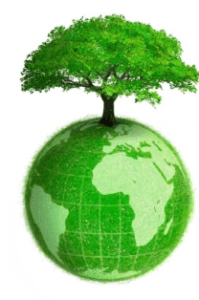By JAKE OFFENHARTZ, JENNIFER PELTZ, MICHAEL R. SISAK and ALANNA DURKIN RICHER Associated Press NEW YORK (AP) — In the wake of salacious...

Global News Through a Greek Lens
Global News Through a Greek Lens


One year in prison and €293,000 in compensation. That was the ruling of a Seville court in September 2016 against three executives of the mining company Cobre Las Cruces SA.
Γράφουν οι MANUEL RICO AND LORENZO BUZZONI
The trio confessed to one count of environmental crime — contamination of an aquifer near the copper mine with arsenic, and one count of damage to the public domain, as the company had illegally extracted more water than permitted.
Six months earlier, and despite the ongoing legal proceedings which started in 2008, Cobre Las Cruces began coordinating a project called Intmet, which aimed “to maximise metal recovery yield and minimising energy consumption and environmental footprint.”
Intmet was part of the Horizon programme and was funded by the European Commission to the tune of €7.8m, of which €2.73m went to Cobre Las Cruces. The firm, based in Spain but owned by Canada’s First Quantum Minerals, has been chosen to participate in seven Horizon projects related to critical raw materials (CRMs), which are essential for the energy transition and digitalisation. In total, it will pocket €5.53m in public money, the second highest total of European firms awarded funding.
Less than 20km from the Cobre Las Cruces mine is the town of Aznalcóllar. One of the biggest environmental disasters in recent European mining history took place there in 1998. The rupture of the Aznalcóllar pyrite mine pond caused the discharge of six million cubic metres of toxic sludge into a nearby river, killed thousands of fish and damaged 4,634 hectares, some so contaminated it could no longer be farmed.
The mine was owned by Boliden, a Swedish multinational, which paid around €40m for the damage caused by the disaster. However, Boliden’s Spanish subsidiary declared bankruptcy soon after, with the Spanish government still owed the €43m it spent on the clean-up, and local authorities short of the €89m they spent on restoration. Boliden is not paying but is collecting money from European taxpayers. The Swedish multinational has received €2.7m for its role in eight Horizon projects. Several of which aim “to minimise environmental impact of mining operations”.
Investigate Europe has analysed all CRM-related projects funded by Horizon 2020, the EU’s flagship scientific research scheme with a budget of €80bn between 2014 and 2020, and its successor, Horizon Europe, which plans to distribute €95.5bn between 2021 and 2027. Horizon funding covers issues ranging from the climate crisis to medicines and food security. The UK announced in September it would rejoin the scheme after a Brexit-enforced absence. Among the thousands of projects supported, 95 are directly related to CRMs. These received €667m and involved 1,043 entities, including companies, universities and research centres.
Such attacks on the environment by companies receiving EU funds have not only occurred in Europe. Boliden, which caused the Aznalcóllar disaster, was named in a report on human rights violations by companies in third countries, requested by the European Parliament. The Swedish multinational was accused of exporting mining waste to Chile, where a subcontractor disposed of it without treating it properly, harming the health of local communities.
France’s Eramet, which received €1.9 million for four Horizon projects, faces allegations of destroying the forests and lands of indigenous communities in Indonesia affected by the development of Weda Bay, the world’s largest nickel mine. Another Eramet subsidiary, Société Le Nickel, is under scrutiny for alleged environmental damage in New Caledonia.
The UK’s Anglo American, which received just over €200,000 from a Horizon project, is facing a class action lawsuit over the alleged mass lead poisoning of children in Zambia, and has faced pollution allegations in Brazil and elsewhere. Investigate Europe identified more than a dozen companies named as recipients of Horizon funds related to the green transition and at the same time alleged perpetrators of environmental wrongdoing.
When asked whether committing environmental crimes was compatible with receiving subsidies, the EU Commission said it “gives thorough consideration to environmental factors in relation to projects funded by the EU”, pointing out that the European Green Deal introduced the principle of “do not significant harm”. The spokesperson added that in Horizon Europe, participants must demonstrate projects respect the climate and environmental priorities set by the EU. They did not comment on the Cobres Las Cruces or Boliden cases nor on why others linked to wrongdoing had been so well supported.
The data holds more surprises. The EU defends the imperative need to reduce its current dependency, especially on China, but also important in the case of Russia. Notably, none of the 11 sanctions packages against Russia have targeted the critical raw materials trade. Investigate Europe has previously revealed that Europe continues to buy nickel, copper and titanium from Russia in vast quantities.
Indeed, Horizon’s public money has also ended up in Chinese or Russian hands.
Soil Machine Dynamics, a leading underwater robotics company, received €3.53m from Horizon’s budget for the Vamos project, which aimed to develop a new technique to extract minerals from previously unreachable depths. The project started on 1 February 2015, and five days later, the private equity fund Inflexion announced it had sold the UK company to Zhuzhou CSR Times Electric, whose majority shareholder is the Chinese state. Vamos ran until 31 January 2019.
Ireland-based Aughinish Alumina refines bauxite, the rock from which the alumina used to produce aluminium is extracted. It has been owned since 2007 by Rusal, a Russian group that dominates the sector and one of whose key shareholders is Oleg Deripaska, who is on the EU, UK and US sanctions list. Aughinish Alumina is also included in another list, that of Horizon beneficiaries. It received €563,500 for its participation in a project investigating how “to render bauxite residue reuse viable from an economical point of view and acceptable for the industry”.
A significant shareholder in Rusal is another well-known oligarch, Viktor Vekselberg, a billionaire who groups part of his investments in a holding company called Renova. Until 2018, Renova held a majority stake in the South African company Transalloys, which produces manganese ferroalloys, although that year it reduced its shareholding to below 25 percent. Renova and Transalloys both refused to comment on the current shareholding structure.
Most Horizon recipients are from the EU, but there are exceptions, including Transalloys. Since January 2023 it been part of the HalMan project, which aims to develop a process to extract manganese in a more sustainable way using hydrogen. The South African company will receive just over €73,000 from the EU budget.
European taxpayers’ money has also gone to a company based in the British Virgin Islands, one of the world’s most infamous tax havens. Lancaster Exploration Limited participated in a project aimed at providing Europe’s high-tech industry with new “exploration models for alkaline and carbonatite provinces”. Lancaster specialises in rare earth exploration in Africa and received more than €168,000 of Horizon money.
“As a general rule, legal entities must comply with any applicable legislation, including tax legislation,” a European Commission spokesperson said when asked about Lancaster Exploration’s funding. He added that the EU has powers to terminate funding if a participant breaches “tax obligations” or was “created under a different jurisdiction with the intent to circumvent fiscal, social or other legal obligations in the country of origin.”
Despite the apparent willingness of the EU to fund all manner of companies, the presence of big industry is essential, says Josep Oliva, a professor at the Polytechnic University of Catalonia in Spain. He coordinated a 2014 Horizon project focused on using artificial intelligence to improve processes with tungsten and tantalum.
“We needed raw materials to work with,” Oliva says. “And this was provided by the companies. We worked with mines in Austria, the UK and Spain. And then it is important to work with the companies to transfer the results.”
According to the Commission’s own classification 45 percent of the Horizon money went to for-profit companies, 28 percent to universities or educational institutions and 20 percent to research centres.
The research covers broad fields and objectives, including one on the competitiveness of European mineral resources, one about creating a European network of CRM experts, another on developing a “bio-inspired, modular and reconfigurable robot” for mining difficult-to-access deposits and others on artificial intelligence and battery recycling. Two funded projects, Ciran and Next, were specifically focused on improving “social acceptance” of mining within Europe.
“Most mining companies active in Europe now recognise that it is paramount to engage with local communities, to create and shape relations into a level that goes beyond mere acceptance.” says Vitor Correia from the International Raw Materials Observatory and a coordinator of the Ciran project.
Mining has a bad image, Correia admits. But he does not think this is fair: “It is true that the picture people have of mining has been shaped by past behaviours that were not good examples.” Correia says the media is to blame for spreading “bad news” about the industry. “However, these mainly come from less developed countries, thereby forgetting all the good examples that we have in Europe, where good practices in mining operation and aftercare prevailed for more than 30 years.”
Europe now wants to increase its domestic mining practices. In March, the European Commission presented its Critical Raw Materials Act, a legislation aimed at reducing EU dependency on third countries for commodities such as lithium and nickel.
The Horizon funding reflects the growing interest in CRMs. Of the €667m earmarked for projects between 2014 and 2023, more than €300m was allocated to projects starting in the past two and half years.
Entities based in Germany, Spain, Finland, France and Norway have received the most money. Almost 90 percent went to groups registered in the EU, including the UK in the case of Horizon 2020 money. In total, entities from 57 countries have received some form of Horizon funding.
The mining lobby, taking advantage of the EU’s concern to increase European autonomy, is pushing for an increase in public funding. Its aim is to fund not only scientific research, as with Horizon, but also industrial technological development.
The truth is that, beyond the Horizon schemes, there is already more public money — not for mining directly, but for the broader industry. Between 2017 and 2022, the European Investment Bank financed 26 projects with €3.6bn, according to data provided to Investigate Europe by the EIB. Most went on battery development initiatives.
National and regional budgets of member states are a source of public money for some mining companies. On 9 August, for example, the European Commission gave the green light to a €26.7 million subsidy granted by Spain to Cobre Las Cruces to modernise its refinery at the Seville mining complex. The Commission believes that this state aid will contribute to the objectives of the European Green Deal. This is despite the fact that Cobre Las Cruces is not always exactly a good example of “green” practices. Since the events that led to three of its executives being convicted for environmental crime, the Spanish government has twice sanctioned the company for illegally retaining water in its mining operation.